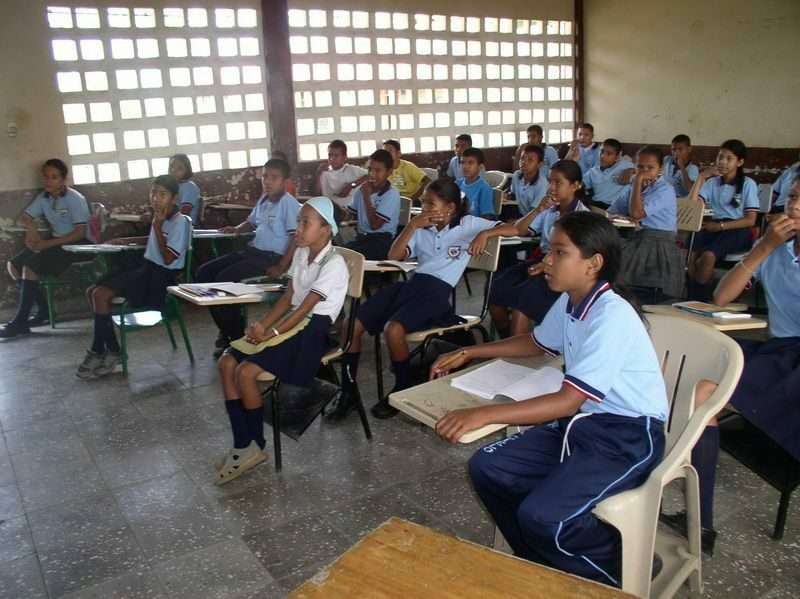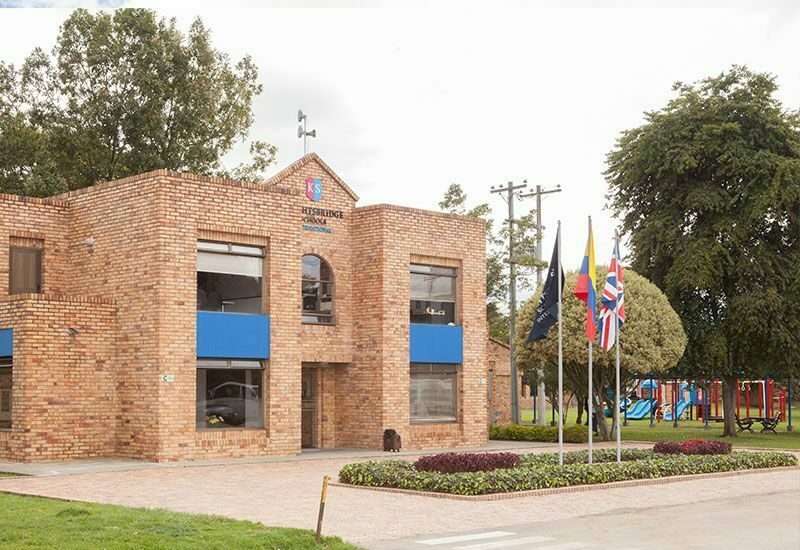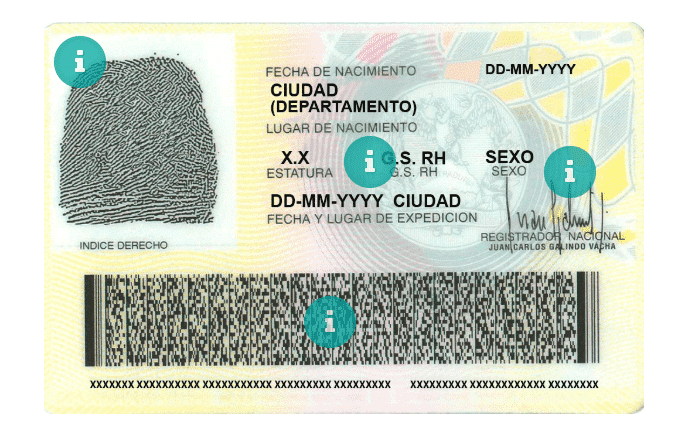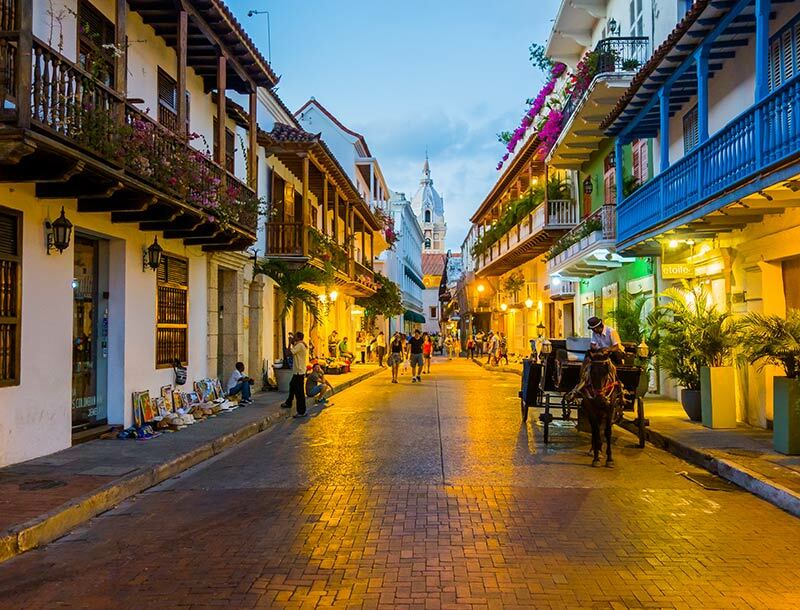How to Teach English In Colombia?
If you yearn to teach English in Colombia, a country shunned by the world for its descent into violence and chaos, Colombia has made an impressive comeback. Economic development and education are high on the government’s reform measures. Given its natural advantage as a gateway to South America and its own fabulous terrain, tourism is regarded as an engine for its economic growth. The government understands that these aspirations can be met only with better English-speaking skills in the country. Thus, the job market for jobs teaching English in Colombia is booming, making it one of the best countries to teach English.

In 2015, the Colombia government launched a 10-year plan titled Colombia Very Well. The objective is to promote Colombia as a bilingual country. To implement this plan, the government has been trying to ensure that there are more native speakers available to teach English in Colombia.
By 2025, the country hopes to have 185,000 high school graduates with intermediate English speaking and writing skills. With this kind of focus on bilingualism, opportunities for teaching jobs abroad in Colombia have increased over the past five years.
Several options will allow you to get started teaching in Colombia:
The public-school system:
As part of the bilingualism plan, the government of Colombia has created teaching assistant positions for native speakers. The foreign teachers have hired to co-teach the English classes in public schools.
Private Language Schools:
Colombia Very Well project underlines that workers in private and public companies and institutions should also be bilingual. English speaking skills are highly valued as it helps in professional and career growth. This has led to a boom in private language institutes across the country, especially in bigger cities. They offer substantial work opportunities for native speakers interested in a career to teach English in Colombia.
Private Bilingual Schools:
This includes both international schools as well as Colombian private bilingual schools, which follow the national curriculum. These are the most sought-after jobs for teaching English in Colombia. The pay scales are higher. But professionally, too, the work is rewarding as these schools expect a higher level of immersion in English for their students than public schools.
Government Teaching Programs:
The government has yet another project to encourage the use of English in the country. Known as Teach English in Colombia (TEC), it brings together industry and the church to provide vocational English training to students. The students are not charged for the classes. The program is known as SENA. If you are a US citizen scouring the web for opportunities to teach English in Colombia, you can check out SENA.
Private Tutoring:
You could join an online platform to supplement your income. Another option is to take private classes. Most schools do encourage their students to take tuitions. You could either take group or individual classes.

Educating Abroad Quick Tip: Most jobs for teaching English in Colombia are found in the big cities of Bogota, Medellin, Cartagena and Cali.
Most Efficient Ways To Apply For Jobs To Teach English In Colombia?
Teacher recruitment in Colombia is a year-long process. This is because different jobs hire at different times of the year. The academic year in public schools and SENA is from January to November. If you would like to focus on these institutes to teach English in Colombia, you must start your application process by November. Private schools and international schools follow a different system. Their academic year begins in September and ends in June. The application process for these schools begins by May. Language schools hire all through the year.

The differing academic calendars may make your TEFL job search slightly complicated. If you’re applying to private schools, public schools, SENA, you can apply online. The government normally hires teaching assistants for public school through recruitment agencies. If you hope to work in language schools, it is better to be in Colombia whilst seeking potential jobs. You need to be on the ground and use your network of contacts.
You can check out the table below to get a better idea of the application process in different institutes or schools.
Type of Institution |
Hiring Season |
Preparation |
Submission |
|---|---|---|---|
|
Public School/SENA
|
October/November/Dec
|
Recruiters list, CV, Demo video tape, Cover letter
|
Online
|
|
Bilingual/International Schools
|
May/June/ July
|
CV, Demo video tape, Cover letter
|
Online
|
|
Language Schools
|
Jan-Dec
|
CV, Demo class
|
Face to face
|
|
Private Tutoring
|
Jan-Dec
|
Marketing, Networking
|
Face to face
|
What Are The Qualifications Needed To Teach English In Colombia?
The qualifications needed to teach English in Colombia are vague as far as the mandatory requirements are concerned. What does give you an advantage in the job market is having a Bachelor’s degree (it can be in any subject), being a native English speaker and a certificate like TEFL or its equivalent.
If you do not have any of these qualifications but are still keen on teaching English in Colombia, do not be disheartened. It is still possible to land a job. Of course, you may have to compromise on the salary.
If your purpose is to explore this fascinating country by teaching English in Colombia, then some notable advice would be to take up the lower-paying jobs. You can always supplement your income with private tuitions. The income from both sources together will be enough to cover living expenses and finance your discovery of Colombia.
Educating Abroad Quick Tip: Most private bilingual schools and international schools prefer to hire teachers with at least a year’s experience
The Visa & Steps Required To Teach English In Colombia?
You can apply for a work visa only if you have an employment contract. Most teachers arrive in Colombia on a tourist visa. Normally, schools do help newly appointed teachers in getting their visa processed.
The work visa for teachers is known as the M-5 visa. If you have managed to get a job during an online application process, you can apply for a visa from your home country. Approach the Colombian embassy or other Colombian visa institution in your home country for the forms and submit the documents required. You could also apply online on the website of the Ministry of Foreign Affairs, Colombia.
The documents needed for a work visa vary depending on your home country. But you would normally require the following documents for the visa process:
- Application form for the visa which summarizes your work contract in the format provided by the Ministry of Foreign Affairs
- Valid passport with expiry date more than six months away from the date of application
- Photocopy of the first page of your passport
- If you have visited Colombia earlier, a photocopy of the page showing entry/departure from the country.
- Photocopy of earlier Colombian visa (if applicable)
- Apostilled degree certificate and experience certificate. Spanish translation of the certificates will also have to be submitted.
- Passport size photo
- Employment contract
- A letter from your employer
- Fee payment of $282
Educating Abroad Quick Tip: Some schools expect you to work on a tourist visa which can be renewed by leaving and re-entering the country. This is illegal, though the government rarely takes action.
Once your visa application is approved, you have to travel to Bogota to get your passport stamped. If you apply online and your documents are in order, the visa is likely to be approved within a week.
After the M5 visa is granted, you have to apply for the Colombian ID card within 15 days. The ID card is known as the Cedula de Extranjeria. It is mandatory for all foreigners. You cannot rent an apartment or open a bank account without it. You will also need the Cedula de Extranjeria to apply for internet, cellphone and landline connections.

Since you will be fingerprinted and photographed, you need to go in person to the immigration department for the application process.
Things to Do
- Blood test
- Fill the application form for the Cedula de Extranjeria
- Fix an appointment with the immigration office (Migración Colombia). This can be done either online or over the phone.
On the day of the appointment, visit the office and submit the following documents:
- Original passport with the visa
- Photocopy of the first page of your passport
- Blood test results
- Photocopy of your visa
- Pay a fee of $58
You will be informed once the ID card is ready to be picked up.
Educating Abroad Quick Tip: You do not apply for the Cedula de Extranjeria within 15 days of getting your work visa, you have to pay a hefty penalty that may amount to six months salary.
The Work Environment & Salary For Teaching English In Colombia
Salaries for teachers in Colombia depend on their qualifications. The higher your qualifications, the more you are likely to earn while teaching English in Colombia. The language schools have both full time and part-time opportunities. They pay between $700-900. If you are a part-timer, you will likely be paid by the hour. The per-hour rates vary from $8-$18.
Language schools generally do not offer any additional perks or benefits. At most, as a part-timer, you may be allowed to choose between morning or evening sessions. Some language schools expect you to travel to clients and conduct classes at their premises. If this is not something you would enjoy doing, please clarify it during the initial negotiations.
The government-run public schools offer salaries in the range of $400-$600. Some schools offer housing allowance or accommodation. Private schools pay up to $1000. Salary ranges in international schools are higher. Besides, you get perks like airfare, paid vacations, housing allowance and health insurance. If you plan to take private tuitions, you can charge students between $12-$27 based on higher qualifications and experience.
While teaching English in Colombia, you have to get used to certain aspects of life in this fascinating country. These include:
- Students can be very informal and may refer to you by your first name.
- Colombians are not punctual. Students and colleagues may turn up late for classes or meetings.
- Classrooms are not very well equipped.
- Teaching is not a very demanding profession in Colombia. You will have a lot of free time on your hands.
- There are several public holidays in the country. Fiestas patronales are joyously celebrated and often lead to classes being cancelled.
- The dress code for teachers varies widely. Some schools expect professional attire. In other schools, teachers come to class dressed in T-shirts and shorts.
- Work hours can be between 35 – 40 hours a week, with around 20-25 teaching hours.
Some Quick General FAQ's On Teaching English In Brazil
Can you teach English in Colombia without a degree?
Yes you can teach English in Colombia without a degree. Colombia is one oof the very few places in the world where you do not require a degree to teach English. Please note however that even though you do not need a bachelors degree to teach English in Colombia, Schools and language centres do place a higher emphasis on recruiting teachers with a degree.
How much can you make teaching English in Colombia?
You can make on average $1000 USD per month teaching English in Colombia. You can earn more than this with more prestigious private & International schools which also come included with a lot of perks such as airfare and accomodation. However as mentioned previously, teaching English in Colombia is not a decision to make if you want to make a lot of savings.
Living Expenses Teaching English In Colombia?
Colombia is an inexpensive country that offers a very decent quality of life. You can live comfortably for around $500 per month. Rents are low. Food is inexpensive, considering the quality and diversity of the produce. Travel, especially on Colombia’s buses, is inexpensive. If you want to travel across the country while teaching English in Colombia, you can opt to take a domestic flight. Airfares are very reasonable.
The rent out of a one-bedroom house for a month in the city is $265, while a similarly sized apartment in the city’s outskirts will be $200. Of course, it depends on the city where you are working. Housing is expensive in Cartagena as compared to places like Santa Marta and Barranquilla. You will be charged $63 for utilities, including water, electricity, garbage and cooling/heating. Internet charges average $25, depending on your plan. Cellphone prepaid rates are around $0.07 per minute.

While teaching English in Colombia, be sure to include a culinary discovery of the country along with your other exploration plans. From the typically Colombian deep-fried empanadas to the meaty bandeja paisa, Colombia cuisine is hearty and filling.
Dining at an inexpensive Colombian restaurant will cost you around $3. A meal for two in a mid-scale restaurant will be around $17. A cup of coffee to round up the meal will put you back by one dollar. It is advisable to avoid drinking tap water. Bottled water is available for $1 (1.5 litres).
Educating Abroad Quick Tip: Bring key items with you from home as imported goods are expensive in Colombia.
Public transport is the best option to get around the city. A monthly bus pass is around $30. There are also taxis and motorcycles. A one-km ride in a taxi is normally billed at $1.5.
Shopping for groceries in Colombia is a fulfilling experience. The supermarket shelves are well stocked and affordably priced. The produce is extremely fresh. If you are careful, you can have homemade meals for as low as $200 per month.
The average salary in Colombia is around $290 per month. You will earn well above the national average while teaching English in Colombia. The income is enough to have a decent standard of living and finance your travel within Colombia.
Educating Abroad Quick Tip: Colombia has world class healthcare at very affordable rates.
Spending Your Downtime When Teaching English In Colombia
Even the well-travelled tourist will be amazed at the diversity that Colombia has to offer. From the brooding jungles of Amazon to the sunny beaches of the Caribbean, the country is a please-all destination. Do you prefer the mountains? Go hiking on the mountain trails of the Sierra Nevada in Santa Marta. Are you for the sun, sand and the sea? Have fun splashing in the crystalline waters in the Caribbean beaches of San Andrés. Had your fill of the beaches and mountains? You want to see something that is truly extraordinary and unique?
Well, welcome to Chiamocha Canyon, the second largest canyon globally with a depth of 6,560 feet. Or head to Chocó to listen to the song of the humpback whales. Is there anything that can beat the magic of listening to the whale’s sing? How about checking out the River of Five Colors or Caño Cristales? Where else, other than in Colombia, can you see a river painted with shades of yellow, black, green and blue? Or have the chance to explore an ecosystem that is one of its kind on the earth?
Once you are done marvelling at Colombia’s beautiful biodiversity, it’s time to visit the wonderful cities. Wander through the colonial buildings at Cartagena, dance the salsa at Cali, visit the museums at Bogota, Colombia’s vibrant capital, or have a taste of the exciting nightlife at Medellín, the city where Colombia’s dreaded drug lord, Pablo Escobar, ruled with an iron fist.
Teaching English in Colombia will give you the chance to do some truly unique things. Here is a list of unmissable activities you must try out:
Visit A Coffee Plantation:

Get to know what goes into making one of Colombia’s greatest exports – its aromatic coffee. The coffee plantations, known as fincas, are located at the Zona Cafetera. The plantation management will take you around in a classic World War II jeep which is very popular here. The tour takes you through the entire process, from planting a coffee seed to brewing the perfect coffee cup.
Go Scuba Diving In Providencia:

Check out the brilliant colours and vibrant underwater life by scuba diving off Providencia or Santa Catalina’s islands. With crystal clear waters and amazing sea life, the quiet islands are known as the western Caribbean’s hidden gems. They are home to the third-largest coral reef in the world.
Spot the Pink Dolphin:

The pink dolphins are a rare sight. Found in the Amazon river, the myth is that they transform themselves into handsome young men at night! While that story may be a little difficult to swallow, do count yourself lucky if you spot one of the pink dolphins.
Watch the Stars at Tatacoa:

Colombia’s second-largest desert is famous for its surreal sand formations. With its red and uneven dunes stretching endlessly for miles, you may wonder if you have landed on Mars. But what is absolutely unforgettable is the sight of the stars shining down brilliantly in the clear desert night. Tatacoa’s unique location makes it possible for stargazers to view both the northern and southern hemisphere constellations.
International Teachers Experience Teaching English In Colombia On YouTube
Teach English In Colombia: Our Lasting Thoughts
For teaching abroad destinations, Colombia is a good option. A beautiful country, warm people, good living conditions and decent pay scales have resulted in several teaching professionals heading to its cities to try out the Colombian way of life. The only catch is that though Colombia has emerged from its notorious past, there are still some areas where law and order are problematic. But if you get a job in one of the country’s major cities, your stint in Colombia will be a memorable experience.
Anecdotes by ex-pats teaching English in Colombia indicate that living and working in Colombia is a ‘crazy ride’.




















